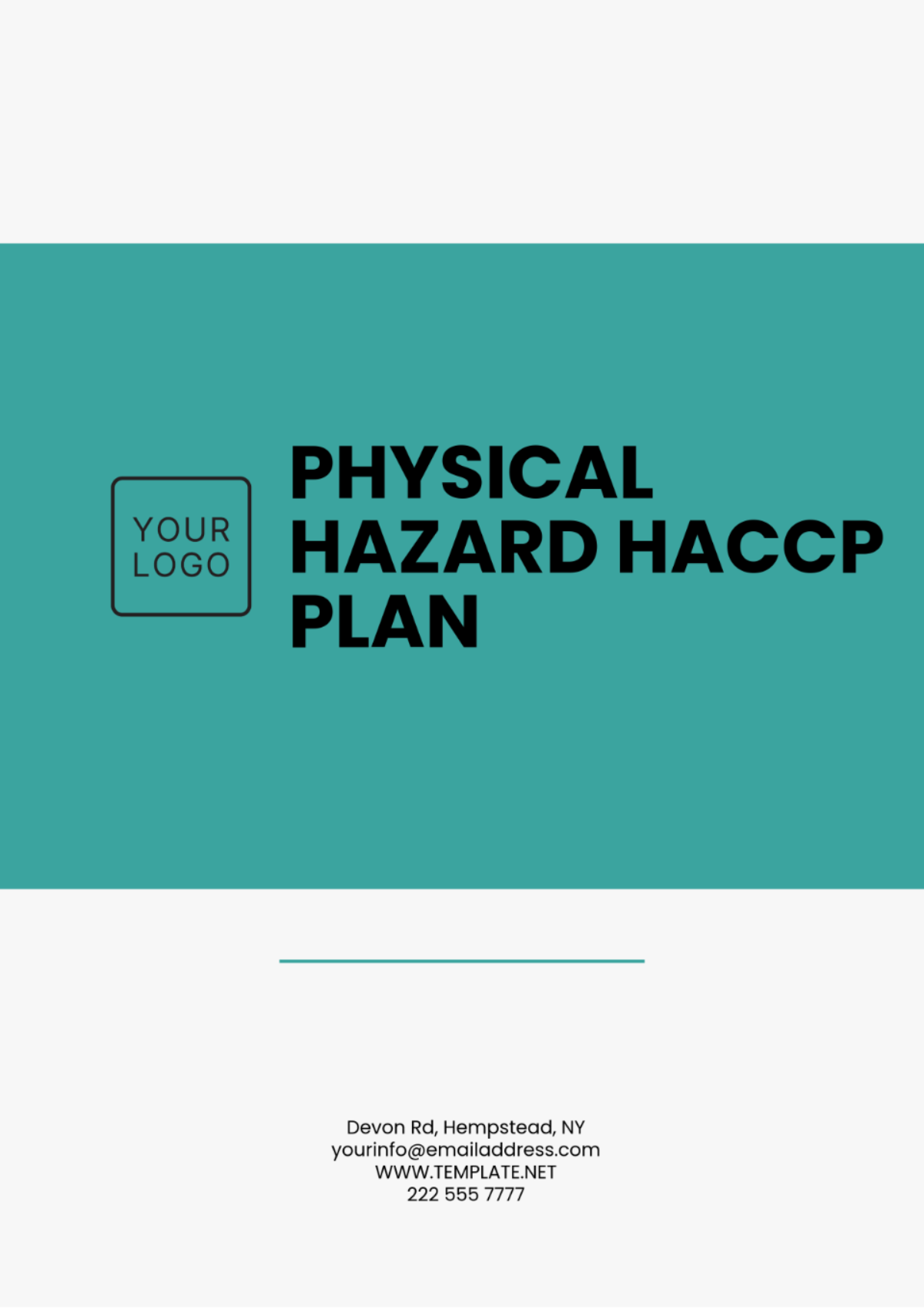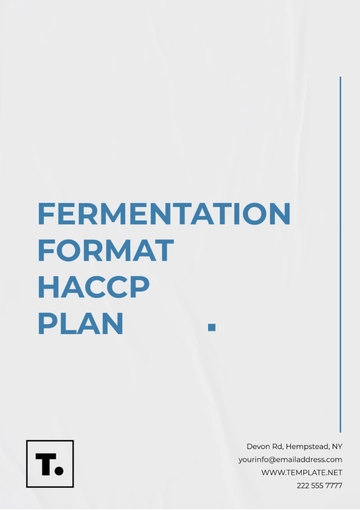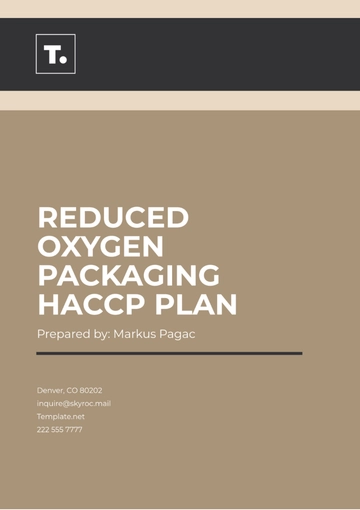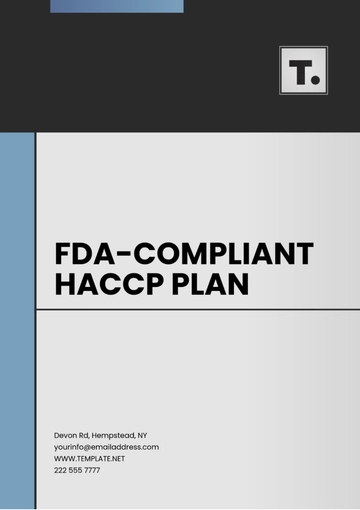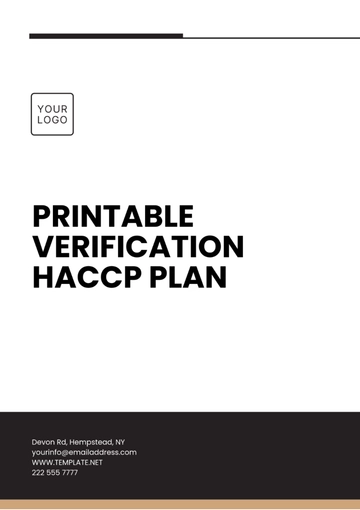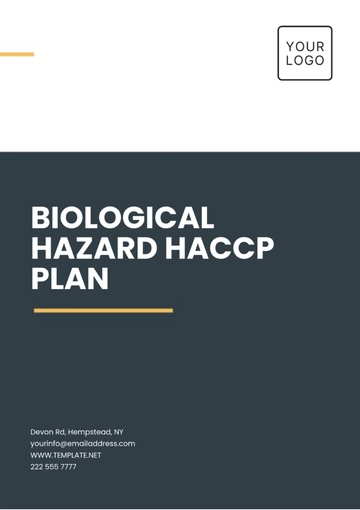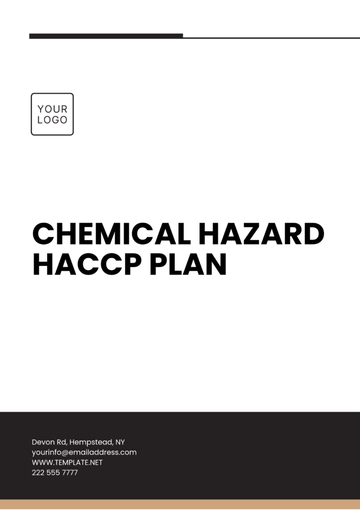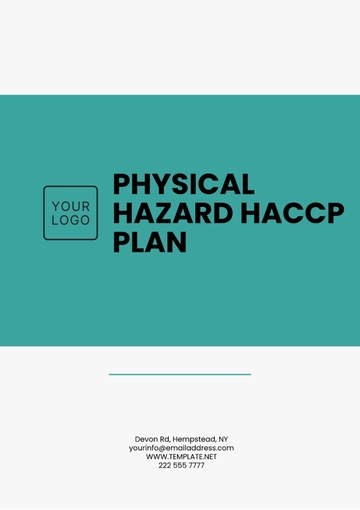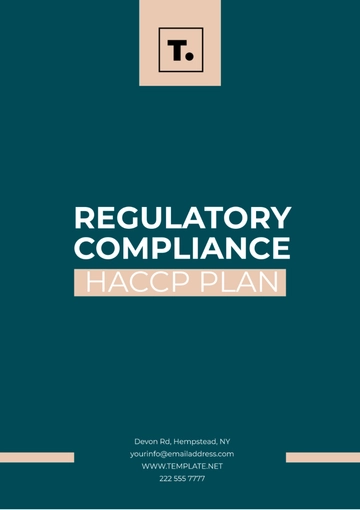Physical Hazard HACCP Plan
Date: November 10, 2060
Prepared by: [YOUR NAME]
I. Hazard Identification and Analysis
This section involves identifying potential physical hazards in the production process. Physical hazards are foreign objects that accidentally enter the product, such as metal fragments, glass shards, or plastic bits.
A. List of Potential Physical Hazards
Metal fragments
Glass shards
Plastic pieces
Wood splinters
B. Analysis of Physical Hazards
Hazard | Source | Potential Impact |
|---|
Metal fragments | Equipment damage | Injury, product contamination |
Glass shards | Broken containers | Injury, product recall |
Plastic pieces | Packaging materials | Product contamination |
Wood splinters | Pallets, crates | Injury, contamination |
II. Critical Control Points (CCPs)
A Identifying CCPs
Receiving raw materials: Potential contamination from suppliers.
Production and processing: Possible hazards from machinery or the environment.
Packaging: Contamination risks from packaging materials.
Final inspection: The last opportunity to detect and address any hazards before shipment.
B Control Measures at CCPs
CCP | Control Measure |
|---|
Receiving raw materials | Inspection of incoming materials, supplier certifications |
Production and processing | Routine equipment maintenance, cleanliness checks, use of protective barriers |
Packaging | Installation of metal detectors and X-ray machines to detect foreign objects |
Final inspection | Thorough visual inspection, and use of advanced detection systems like magnet traps or sieves |
III. Monitoring Procedures
Monitoring ensures that CCPs are functioning as intended and helps detect any deviation from the established limits.
3.1 Monitoring Methods
Routine visual inspections
Use of metal detectors and other screening equipment
Regular maintenance checks by trained personnel
3.2 Frequency of Monitoring
Each CCP is monitored at different frequencies depending on the potential risk involved. For example, metal detectors should be checked daily, whereas visual inspections might occur per production batch.
IV. Corrective Actions
These are steps taken when a hazard is detected at a CCP. The aim is to eliminate the hazard and prevent recurrence.
4.1 Steps for Corrective Action
Identify and isolate affected product
Determine the source of contamination
Maintain a record of corrective measures taken
Adjust process to prevent future incidents
V. Verification Procedures
Regular verification ensures the HACCP plan is effectively managing the potential physical hazards.
5.1 Verification Techniques
5.2 Frequency of Verification
Verification needs to be carried out no less than once every three months, or whenever there is a noteworthy alteration in the process or a modification in the equipment used.
VI. Record Keeping
6.1 Types of Documents
Monitoring logs for each CCP
Corrective action reports
Verification records
Employee training records
6.2 Storage and Access
Records must be stored in a manner that ensures their security, whether in a digital format or as a physical hard copy. Additionally, these records should only be accessible to individuals who have been granted the necessary authorization to review them.
Plan Templates @ Template.net
